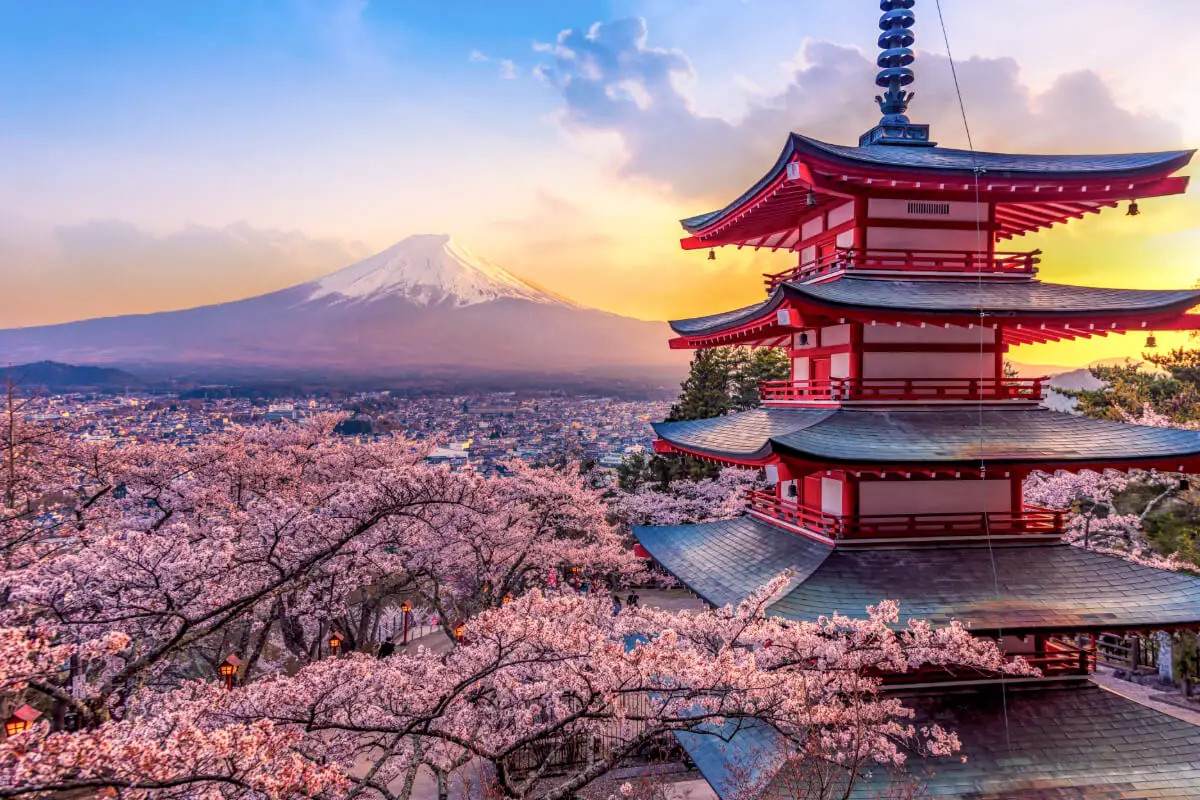In the rich tapestry of Japanese culture and language, certain words carry a significance that delves into far greater depths than their literal translations. ‘‘Hana’’ is one such word, a linguistic jewel that exhibits Japan’s cultural and emotional essence. Detailed understanding of Hana requires not only the comprehension of its direct translation – ‘‘flower’’– but also the exploration of its various contextual interpretations.
With its profound symbolic meanings, Hana transcends the realm of words. She is an integral part of Japanese art, literature, festivities, and customs, beautifully exemplifying Japanese perspectives on nature, life, and beauty and that it’s’ more than just a word.
Table of Contents
- Understanding the Japanese Culture and Language
- The Literal and Symbolic Meanings of Hana
- Hana in Japanese Art and Literature
- Hana’s’ Role in Japanese Festivities and Customs
- Related Questions
Understanding the Japanese Culture and Language
In the world of wanderlust and worldwide explorations, there’s a place often misunderstood yet brimming with depth and intrigue that will charm the most curious of minds. It’s Hana is a word deeply rooted in Japanese culture and language. So, pack your virtual bags as we embark on an adventure to understand this fascinating term better.
’Hana’ is more than just a name in Japan. Its essence embodies the multilayered beauty and complexities interwoven in Japanese culture. Think of Hana as a symbol of transformation and fleeting beauty, directly associated with the cherry blossoms (Sakura) that delicately grace Japan every spring. Watch these trees spring to life in a radiant fanfare display, only to shed their petals within a couple of weeks, embodying the life cycle, an evocative reminder of life’s transient nature.
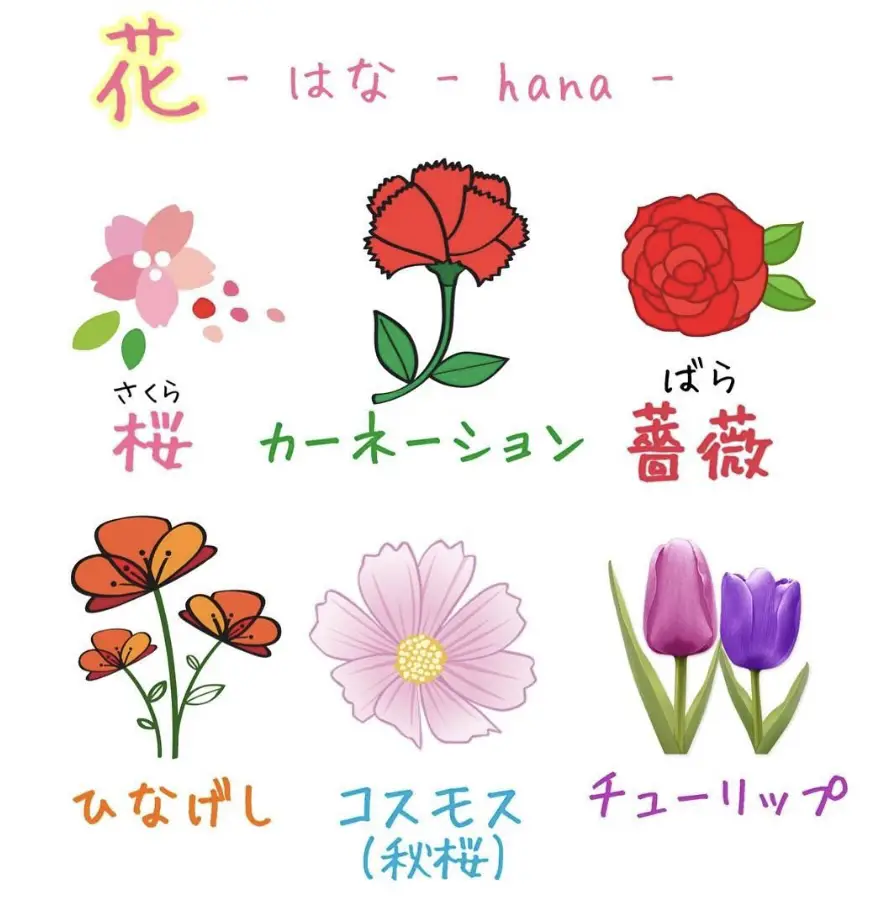
Immerse yourself in Hanami, a Japanese tradition that entails viewing and appreciating the blooming flowers, most notably the cherry blossoms. It’s’ an annual tradition with everyone, from kids to grandparents, picnicking under these beautiful trees, reverently observing Mother Nature’s spectacle. Through Hanami, Hana illustrates the concepts of unity, mindfulness, and celebration beautifully embedded in Japanese culture.
But Hana isn’t’ strictly about cherry blossoms and Hanami. Its usage extends to other facets of Japanese life. It is a common word prefix reflecting a sense of sophistication, particularly in Japanese gastronomy. The term Hanazen, a combination of Hana (flower) and Zen (meal), represents a full-course meal, an epitome of the exquisite food presentation the Japanese are celebrated for.
Beyond food, stepping into the world of sports reveals another layer of Hana. It is lacquered into the exciting game of Hanetsuki, a traditional Japanese New Year’s’ game, similar to badminton but without a net. The game is played with a wooden paddle (Hagoita) and a shuttlecock, with the losing player’s face often painted with ink marks. It’s’ a playful and joyful expression of Hana that makes it alluring to players and spectators alike.
Hana also plays a role in Japanese poetry, symbolizing beauty, tenderness, and the passage of time. Renowned Haiku poets, like Basho Matsuo, often used Hana as an artistic tool to recount their inner feelings towards nature’s beauty and mystery. Hana creates emotional magnitudes in these poetic lines that steer the reader into deep reflection and admiration.
From cherry blossoms to Haiku poetry, Hana bears witness to essential Japanese themes such as beauty, transience, sophistication, and much more. Through it, we capture a glimpse of deeper layers of Japanese culture and language, resonating with profound wisdom and meaningful experiences.
Each nuance of Hana is like a path that invites us all, as passionate travelers, to explore, appreciate, and celebrate the vibrancy of Japanese traditions – both past and present. With each journey taken to understand the depths of Hana in Japan, it’s reminiscent that the world offers so much to discover – one word, symbol, and culture at a time. So, here’s to our next adventure, wherever that may be!
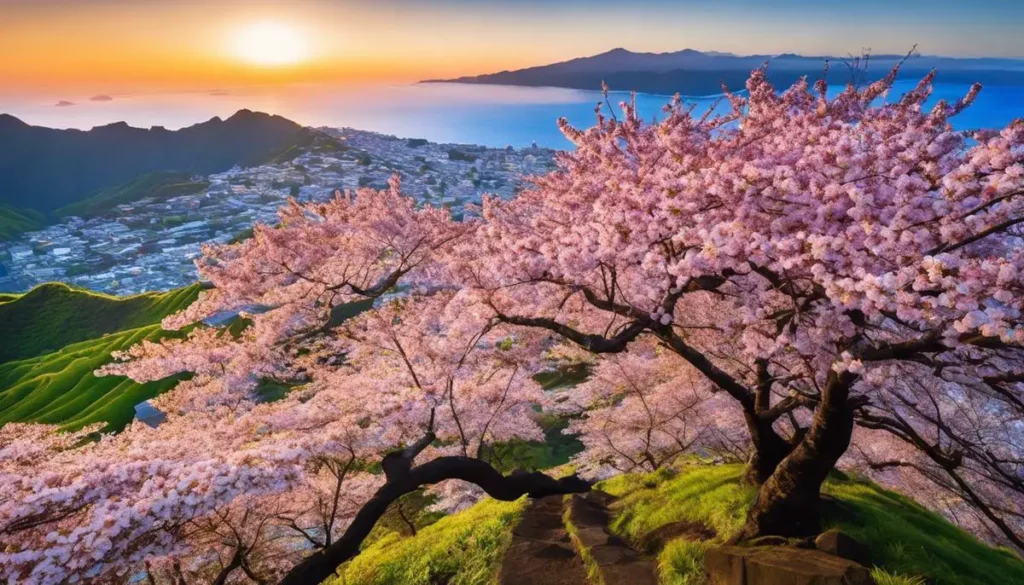
The Literal and Symbolic Meanings of Hana
Dive Deeper into the Essence of ‘‘Hana’’
As you trailblaze across the planet, each culture unfolds like a blossom, revealing unique facets and intriguing nuances. If you’ve set your compass pointing towards the Land of the Rising Sun, there’s one concept you must internalize: Hana.
While we’ve’ unearthed Hana’s’ embodiment of beauty, tenderness, and the passage of time, a vitality still thrives, beating like a heart in the Japanese cultural conscience. It’s more than cherry blossoms and fleeting beauty. Shall we break new ground on this wild blossoming trail?
Let’s’ ignite our curiosity and delve into the heart and soul of Hana. Are you ready, fellow vagabonds? The adventure awaits!
One unconventional yet enlightening view of Hana comes from the martial arts world. ‘‘Hana’’ in traditional Japanese martial arts refers to the control point, the decisive moment of action, where one’s attack can decisively influence the opposition’s strategy.
It’s’ a subtle reminder of how Hana, or ‘‘blossoming’’, can reflect human endeavor in beautiful aesthetics and strategic resilience – an epitome of beauty in strength.
Moving on to the art of naming, Hana is popular in Japan. You might consider being called beautiful every time your name gets yelled out quite flattering, wouldn’t you agree? Notwithstanding, Japanese names offer a deeper touch, and ‘‘Hana’’ is no exception. Depending on the characters used, Hana can mean ‘‘flower, ‘‘’’ blessing, ” or ‘‘favorite, ” each adding layers of depth, symbolizing different forms of beauty.
Now, let’s pave our path through the vibrant world of Japanese anime. Hana is frequently showcased in many anime series as it symbolizes rejuvenation and new life – often mirroring the characters’ narrative arcs. This allusion highlights the principle of Hana as a grand underlying narrative of continuous renewal and rebirth – a beautiful reminder of the cyclical nature of life.
Onto the realm of health and wellness, Hana symbolizes wellness in Japanese beauty and healthcare. The allure of Hana is not merely skin-deep; it extends to depict health, vitality, and wellness. Many traditional and modern Japanese products, from skincare to teas, are named or marked with the symbol of Hana – presenting it as an embodiment of wellness and self-care.
Here’s a fun fact: wanderers! Japan’s’ southernmost city, Ishigaki, celebrates ‘‘Hana Matsuri’’ or ‘‘Flower Festival’’ with all jubilation and fervor, where people joyously welcome spring and all its blossoming beauty. Another facet of ‘‘Hana’’ is another meaning that it unfolds.
So, traversing the multifaceted paths of Hana not only deepens your understanding of the cultural richness of Japan but paints a more vibrant, encompassing picture of this beautiful concept. From the explosive bloom of cherry blossoms to the disciplined precision of martial arts, the richness of Hana is never-ending, ever-evolving – much like our own journey in the world, wouldn’t you say, globetrotter?
Thus, in the end, maybe we aren’t exploring Hana; instead, we’re’ allowing Hana to explore us and our perception of beauty, resilience, renewal, and so much more. So, on this whirlwind journey of unearthing cultural treasures, allow Hana to color your adventures a little more vividly, making your journey through Japan more magical. The world is your blossoming flower – so why not enjoy every petal?

Hana in Japanese Art and Literature
Venturing deeper into the ethos of Japanese culture, the concept of ‘‘Hana’’ paints a vivid palette of transformative beauty. Not limited to the spectacle of cherry blossoms, ‘‘Hana’’ projects a dominant narrative of rejuvenation, resilience, and renewal.
Exploring this concordance is the rallying cry celebrating Japanese culture’s effervescent glory. It’s’ exhilarating to discover how this cultural concept enriches various spheres of life in Japan, from literature to martial arts, healthcare, and beyond.
Looking at the martial arts spectacle, ‘‘Hana’’ rotates the core, a potent symbol of strength. It stands as the control center of an action, correlating nicely with the theory of a flower being the center of life-giving sustenance. Indeed, the lesson is there – the display of strength is as beautiful as a blossom bloom.
In the charming world of anime, an essential vanguard of modern Japanese culture, ‘‘Hana’’ blossoms as a symbol of reawakening. Characters labeled with the name ‘‘Hana’’ often undergo a profound transformation, reflecting a fresh lease of life amid immense hardships, embodying resilience with paradoxical tenderness—a nod to the spring of life emerging from the cold of winter.
Delving into the realm of beauty and healthcare, ‘‘Hana’’ isn’t’ a forgotten muse. This culture stem extends into therapies and products centered around wellness and self-care. Hana-infused skincare decoded from the country’s wealthy traditional knowledge extends beyond aesthetics, pouring into inner tranquility.
Take a journey to Ishigaki during the Hana Matsuri, also known as the Flower Festival, to experience ‘‘Hana’’ in all its glory. The festival embodies many colors, scents, and sounds converging in a grand spectacle tantalizing the senses. Every element, from the vibrant parades to the decorative floral floats, echoes a celebration of ‘‘Hana’’ in its tangible and intangible essence.
‘‘Hana’’ remains an ongoing narrative, its impact not stagnant but growing, evolving, and interlacing into various facets of Japanese culture. Its richness is an unfolding story, its interpretations galvanizing, reflecting a society’s prevailing sentiment and aspirations on the move.
Perhaps the most significant takeaway from understanding ‘‘Hana’’ is reevaluating and enhancing one’s perception of beauty, resilience, and renewal. So, when exploring Japan, embrace ‘‘Hana’’ and let the thrill of discovery align with the serene grace of unfolding cherry blossoms, reverberating a medley of experiences that would interpret Japan like never before.
This isn’t just about seeing a place; it’s’ about grasping the life, the rhythm, and the heartbeat that pulses beneath the surface. Exploring with ‘‘Hana’’ brings a world to life; it paints each journey with a different hue and perspective. It’s’ an adventure like no other, a road less traveled, a vibrant dance with culture against the backdrop of an ancient tradition.
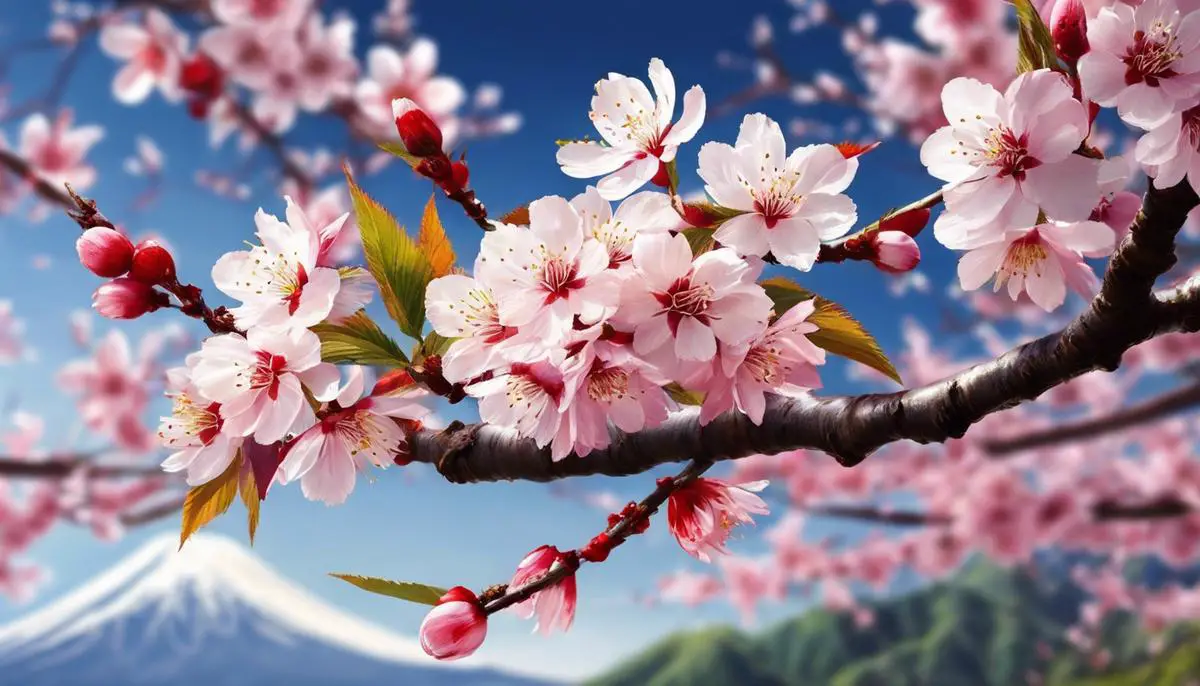
Hana’s’ Role in Japanese Festivities and Customs
Hana weaves its way into Japanese festivities and customs like a captivating melody, echoing throughout different aspects of the culture. Dig a little deeper, and you’ll discover that Hana slides into the world of Japanese martial arts, revealing a unique interpretation as a crucial point of influence and action.
Martial artists in disciplines such as Aikido and Judo often speak about Hana, referring to the graceful diversion and control of an opponent’s movement. It’s a subtle yet commanding presence that illustrates the unique fusion of power and elegance, a cultural imprint that is genuinely fascinating.
What’s’ in a name, you ask? In Japanese culture, the name Hana can have incredibly varied meanings. The Japanese language is steeped in nuance and intricacy, making each name hold its unique significance. Some interpret Hana as a flower, while it can also symbolize the nose, end, or even the best or prime condition. Its beautiful ambiguity intrigues, giving cause for conversation and exploration.
If you’re a fan of Japanese anime, you’ve probably heard about Hana. The realm of anime uses Hana as a powerful symbol for renewal, rebirth, and new life. Characters named Hana often personify resilience, strength, and beauty with the promise of new beginnings. The ‘Hana’ symbolism in anime character names encourages fans to delve deeper into its cultural significance.
You’ll often see Hana’s essence in the sphere of wellness and self-care, where it serves as a cornerstone of Japanese beauty and healthcare. Japan’s’ beauty industry values the natural and precious – and what encapsulates nature more perfectly than a flower? Hana-themed wellness therapies, skincare, and healthcare accentuate Japan’s’ humble yet profound approach to self-love and care.
Dive into Ishigaki Island’s’ Hana Matsuri, or ‘‘Flower Festival.’’ Here, Hana adopts the form of vibrant rituals, parades, and community gatherings that welcome spring in a burst of color and energy. Hana Matsuri is a fantastic embodiment of how hana intertwines with the celebratory fabric of the country.
What continues to captivate is Hana’s’ ever-evolving richness and symbolism. Whether in the traditional or the modern, the expected or the unexpected, Hana constantly resurfaces, painting different strokes onto the vast canvas of Japanese culture.
An understanding and appreciation of Hana can change your perception of beauty. It’s’ about resilience, it’s’ about renewal, and, most importantly, it’s’ about harmony with nature. Allow it to enlighten and inspire you.
Embarking on a Japanese adventure with a Hana-guided perspective can enhance your experience, exposing you to this fascinating culture’s quieter yet vibrant hues. So, as your fingers trace the delicate lines of a hanafuda card or your cheeks feel the soft caress of sakura petals, remember the essence of Hana. It’s’ more than just a term; it’s’ a profound experience waiting to be discovered.
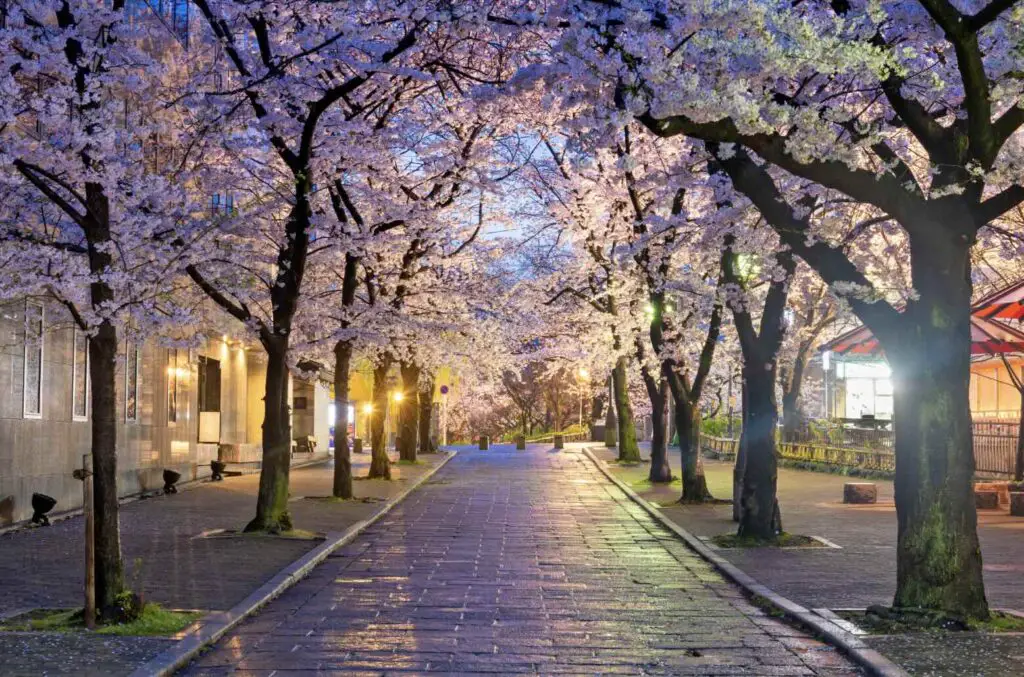
As delicately woven into the fabric of Japanese traditions, the term ‘‘Hana’’ continues to enrich this country’s vibrant cultural and linguistic spectrum. It’s remarkable how a simple word can house myriad meanings and associations, playing different roles in different contexts yet always contributing to the overall understanding of this fascinating culture.
With each cherry blossom viewing, every artistic stroke in ikebana, and every mention in a poignant haiku, ‘‘Hana’’ blooms in its full expression of beauty. It adorns the Japanese language, making it more than a mere tool for communication.
Still, a vivid palette for painting images that narrate stories, echo emotions, and represent a way of life, bridging the gap between the visible and the spiritual in Japan.
At A Bus On A Dusty Road, we talk about travel, life, and ex-pat living. We are all about “Living Life As A Global Citizen.” We explore social, cultural, and economic issues and travel.
We would love to have you be part of our community. Sign up for our newsletter to keep up-to-date by clicking here. If you have any questions, you can contact me, Anita, by clicking here.
Listen to our Podcast called Dusty Roads. You can find it on all major podcast platforms. Try out listening to one of our podcasts by clicking here.
Subscribe to our A Bus On A Dusty Road YouTube Channel with great videos and information by clicking here.
Related Questions
What Is The Meaning Of Koi Fish To The Japanese Culture?
In Japan, the koi fish symbolizes luck, prosperity, good fortune, strength, perseverance – everything good. The Koi fish symbol is very closely associated with the Japanese cultural identity. The word ‘Koi” is a Japanese word that means carp fish.
By clicking here, you can discover What Is The Meaning Of Koi Fish To The Japanese Culture?.
11 Reasons Why I Got Hooked On Korean Television Dramas
Here are the reasons why I have gotten hooked on Korean television dramas 1) Jane Austen would approve, 2) great actors and actresses, 3) well-developed characters, 4) you will laugh, 5) you will cry, 6) you see yourself in the drama, 7) good clean fun, 8) usually has a happy ending, 9) great fashion, 10) lots of food and 11) I have learned to bow and say “thank you” in Korean.
By clicking here, you can discover 11 Reasons Why I Got Hooked On Korean Television Dramas.
What Is The Difference Between Manchu, Mongols, And Han Chinese People?
When you are traveling around China or studying Asian history, it can sometimes be confusing about the difference between the Manchu, Mongol, and Han Chinese ethnic groups of people. They may all seem similar, but they are actually different ethnic groups.
By clicking here, you can discover What Is The Difference Between Manchu, Mongols, And Han Chinese People?

